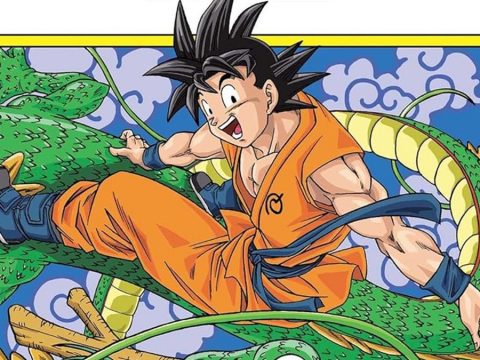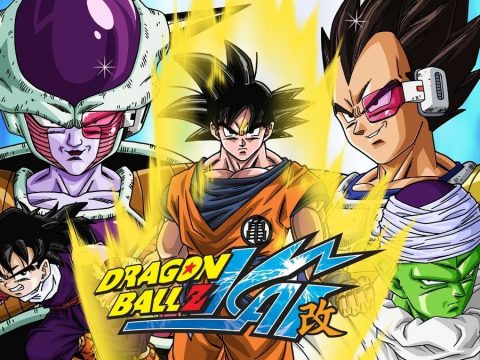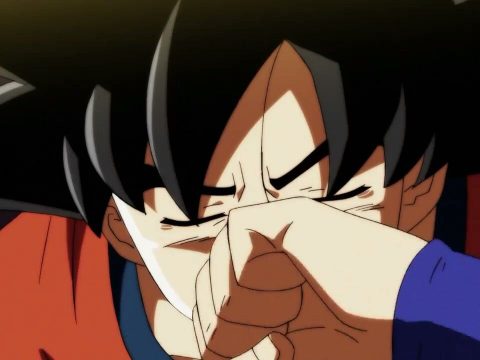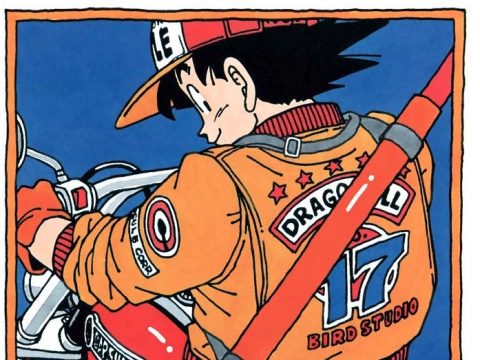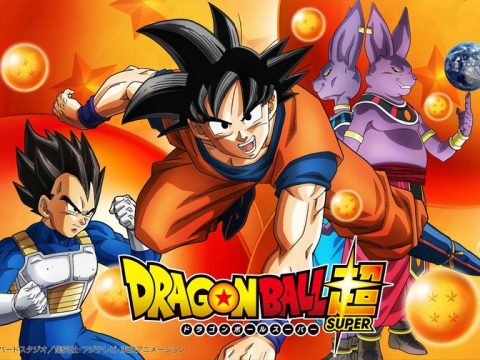The tale of Goku, the world’s strongest and yet most strangely underdeveloped fourteen-year-old, begins here, in a world where almost everyone of any importance is incompetent, a pervert, or both. Akira Toriyama was in what I like to refer to as his “white hot” phase, having started the original manga in 1984, hot on the tail of his astronomical hit, Dr. Slump. Adapting Dragon Ball into a cartoon was a no-brainer, and Toei Animation’s efforts to bring the adventure to the small screen resulted in what is without a doubt one of the most memorable animated action/comedy series of all time.
Though I’ll raise a suspicious eyebrow at anyone not at least partially familiar with the story—one that’s heavily inspired by the Chinese novel Journey to the West—it starts on the young boy Goku, who lives alone in the woods, enjoying a quaint day-to-day of swimming, running, hunting and fishing. With his squat legs and chubby arms, he looks maybe a hair past eight at best, but there’s a frightening power held in that teenage body, the growth of which we’ll all eventually follow from here through the world-shattering muscle mania of his adulthood.
Goku’s quiet life is, in the least Fresh Prince of ways, turned upside down when he runs into Bulma, a teenage girl taking a break from malls and boy chasing to pursue the legendary Dragon Balls… which will inevitably lead to more boy chasing. See, once all seven balls are together, the holder can summon a powerful dragon, granting them but one wish. Bulma wants the perfect boyfriend, and each character she and Goku meet along their quest has their own peculiar, and often absurd, concept of the perfect wish.
Dragon Ball is the quintessential character-gathering journey, and a lot of the fun comes courtesy of Toriyama’s distinct designs, each with their own bizarre quirks and powers. From Oolong, the transforming pig found terrorizing a local village out of their finest maidens, to Goku’s tricky training partner Krillin, each new addition to the cast adds spice to the comedy and action. Actually, the former is the key component here, which might throw those that grew up primarily on Dragon Ball Z for a loop. Fighting plays a role, obviously, but even when the Budokai Tenkaichi takes off, there are more laughs than gasps throughout the tournament.
For those already well-versed in the manga, there’s actually still a great deal of fresh material in the anime. A lot of this comes in the form of side-gags following the evil, terminally dumb Emperor Pilaf. While him and his cronies are prominently featured in the manga, being the first major villains that our heroes face, we get a lot of bonus time with them as they try to get the Balls from Goku. They’re even inserted into scenes they never played part in, but are done so in a way that has almost no effect on the grand scheme of things.
Asides like these also serve to stretch episodes out for maximum impact. For example, they definitely wanted to drag out episode 11, “The Penalty is Pinball,” in order to keep the Dragon’s first appearance at the ever-dramatic tail end of things. It’s a pretty regular occurrence — I mean, if Goku and co. don’t kill some time via hand-to-hand combat with dogs, how will Goku’s transformation scene be as rousingly cliffhanging?
In general, the anime is also much more dependent on the group dynamic than the manga. On page, Akira Toriyama was more than happy to abandon Bulma, Yamcha, Oolong and Pu’ar for as long as necessary while Goku trains, but they jump back and forth between the two groups fairly consistently on screen.
Despite some decent trivia for fans to weigh against one another, all this really serves to do is fuel nerdy arguments over whether or not the manga is superior of vice versa. In the end, they’re both mighty meals. You get the same great tale in one along with additional world-expanding content, so it actually all ends up working in favor of the manga fans. Why just show Krillin rowing up to Master Roshi’s island when you can tease his introduction to those that are already familiar? This goes doubly so for a wild character like Launch.
If there’s one place the anime falters, it’s in carrying over some of the humor. Don’t get me wrong, Dragon Ball is funny, but it’s a matter of fact that no one can beat Toriyama’s comedic timing. Valiant effort, nonetheless.
The first season of Dragon Ball, containing episodes 1-31, comes highly recommended to everyone, and it’s great to see it available uncut and subbed in such a nice collection. Even the first story arc alone would be worth owning, raising a frightening but ultimately implausible question, “what if he had stopped there?” Thankfully, we don’t have to entertain such nonsense, and can instead focus on more immediately pressing issues. Mainly, how do you get a new generation of fans to embrace a slightly dated but well preserved classic that rests under the shadow of its beefed-up successor?
The answer: sit them down in front of disc one and let nature run its course. This should work flawlessly… that is, unless they’re highly allergic to light-hearted adventure and the occasional (okay, frequent) boob and panty gag.
Studio/Company: FUNimation
Available: Now
Rating: TV14
Images © BIRD STUDIO/SHUEISHA, TOEI ANIMATION



